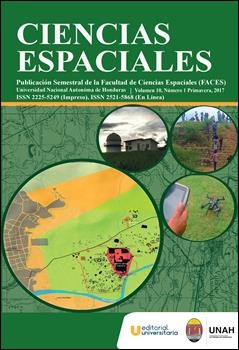Analysis of the Precipitation Behavior Estimated from RTMM data on Areas of Intense Deforestation in the Legal Amazon in the Period 2001-2013
DOI:
https://doi.org/10.5377/ce.v10i1.5822Keywords:
Rainfall estimation, TRMM, Deforestation, AmazonasAbstract
With 6.5 million km2, the Amazon basin is the largest hydrological system in the world, with estimated discharges of 209,000 m3s-1, it is the largest continuous extension of tropical forest. However, this region is the target of constant threats, whether due to deforestation or climate change. In this context, understanding the functioning of the system is essential, either to assist in decision-making or studies of future scenarios. The aim of this study was to analyze the spatial-temporal distribution of precipitation in areas with high deforestation rates in the Brazilian Amazon basin. For this analysis, NASA’s Tropical Rainfall Measuring Mission (TRMM), product 3B43_V6 during the period 2001-2013, estimated monthly rainfall data and the annual rate of deforestation estimated by PRODES are used. Rainfall estimation of the TRMM satellite show good correlations with the data of the observed stations, besides it represents satisfactorily the annual variations of precipitation during the studied period. For the years with the highest rate of deforestation (2001-2006 and 2008), there was a precipitation deficit represented by negative anomalies, while in the recovery period (2009-2013) positive correlations were obtained. Overall, deforestation seems to exert some influence on precipitation. The extensive application of remote sensing techniques using the new Earth Observation programs for monitoring of the correlation studied in The Legal Amazon as a future line are
proposed.
Downloads
1295




